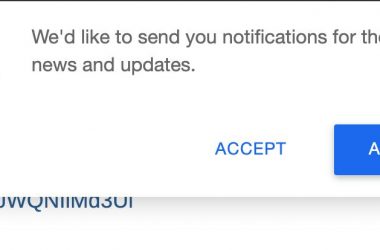Seasoned SEO experts typically have a checklist of items to look out for when conducting a website audit. Checklists can be a highly efficient tool to optimise your content, and subsequent rankings. Whether you’re a novice at SEO audit services, or a seasoned professional, SEO Sydney’s detailed checklist breaks down three crucial items that can guide you to increased search visibility.
<h2> Competitor Analysis </h2>
In SEO terms, competition analysis refers to the act of researching the competitors within your respective industry, evaluating their SEO strategy, and analysing this information to implement aspects of it in your own strategy. The rationale behind SEO competitor analysis is that if a particular approach is working for your competitors, it will most likely work for you too.
An organic search result ranking #1 is ten times more likely to be clicked than an organic search result on the same page ranking #10. Chances are that if it isn’t your page at the top, it is most likely one of your competitor’s. Analysing the SEO practices of top-ranking competitor pages can be a source of inspiration in optimising your own SEO strategy.
Arguably, SEO competitor analysis may prove most useful when conducting keyword analysis, the process of finding keywords competitors rank higher for. Focus on keywords that are relevant to your business, are not too difficult to rank for, and have sufficient search volume that satisfies users’ search intent.
What is perhaps equally as important as your keyword competitor analysis, is monitoring the results of your new strategy. Pay particular attention to keyword rankings with an automated keyword monitoring tool, ensuring you can spot ranking fluctuations and optimise your strategy accordingly.
User Experience
Satisfactory user experience can go a long way in a webpage’s ranking, given that Google’s ranking algorithm has historically always taken it into account.
The core web vital metrics to track and optimise user experience that Google takes into account are:
1. Largest Contentful Paint (LCP)
LCP is an indicator of how quickly the majority of page content is displayed to a user. It represents the time from when a user triggers a page to load, to when the largest text or image is viewable.
An LCP of approximately 2.5 seconds for 75% or more of page visits indicates a good user experience.
2. First Input Delay (FID)
First input delay (FID) is a core user experience metric that measures the time taken for a page to respond to a user’s first site interaction from the time the user first interacts with the page, to the time when the browser begins processing the interaction.
Typically the lower the FID the better, given that its measurement is in milliseconds. An FID of over 300ms is considered to be poor.
3. Cumulative Layout Shift (CLS)
The final core web vital Google considers in its user experience ranking is the cumulative layout shift, a metric that gauges the stability of a webpage by tracking the extent of which content moves whilst loading. It is important not to underestimate the importance of CLS, given that 93% of users reported to exit a page if it did not load properly. Optimising your webpage to ensure content moves minimally whilst loading can greatly improve your page’s user experience.
Technical SEO
On the other end of SEO audit services, technical SEO takes an examination of details that typically take place away from what users are able to see. Beyond on-page and content-driven optimisations, practices that typically involve technical changes occur most frequently on the back and front end of a website, involving the structure and legibility of the site’s content via JavaScript syntax, appropriate HTML tags and interpretation of key layout attributes (eg. hierarchy, multimedia, headings, etc.).
<h3> Page Speed </h3>
With confirmation that page speed is a relevant factor when determining page rankings, ensuring a satisfactory loading time is as important as ever.
Pinpoint issues, if any, in your HTML code that may be slowing down your webpage with Google’s own analytical tool PageSpeed Insights. Test multiple pages from your site, including your homepage, services page, and blog pages to discover what changes can be made in your code to optimise your page speed.
Running a speed test on pages from your website may also be a good idea to incorporate in your SEO audit. Simply enter your page’s URL and the speed testing site will identify any discrepancies that contribute to a slow page speed.
How SEO Sydney Helps
With over 20 years of experience providing the highest standard SEO results, SEO Sydney offers a breadth of custom SEO audit services for your organisation. Whether it’s SEO web design, copywriting, campaign or PPC you’re after, our team of seasoned professionals achieve ethical SEO results using industry leading practices.
Get in touch with us today to book a consultation.


